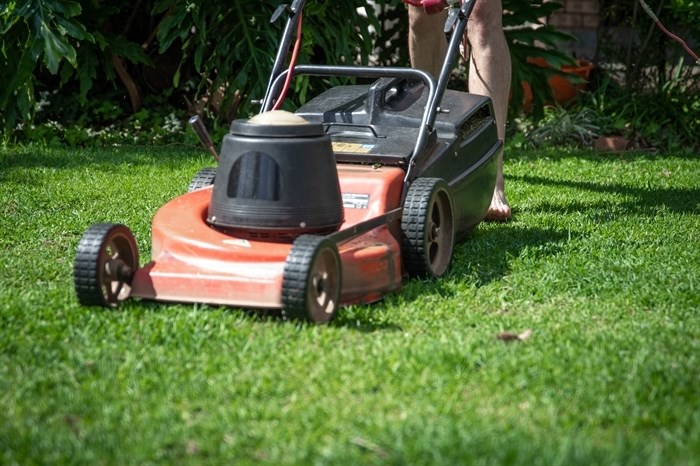Tired of fighting clover in your lawn? Leave it and love it
Lush clover lawns have grown in popularity in the Okanagan as a drought tolerant alternative to heat damaged golden grass.
As areas in the Okanagan practice intermittent watering cycles to sustain fresh water systems during the level three drought period currently being experienced, grass lawns are being converted to clover.
“Clovers tend to have larger and more robust root systems than our typical turf lawn species. They can withstand drought much better than some grass species,” Christopher Szymberski, co-owner of climate resilient landscapes business, Seed and Sparrow Design, said.
Currently the second highest amount of water used by residents in the Okanagan is for outdoor activities, including watering lawns. The water used to water lawns is treated and can be used as drinking water, according to Corinne Jackson, communications director of Okanagan Basin Water Board.
“It’s like running your faucet in your house and putting that water out on your lawn… there’s only so much water and it really should be used wisely,” Jackson said.
READ MORE: From isolation to friendships: A Vernon couple's inspiring waterfall chasing adventure
Clover stays green with less water necessary for its survival compared to traditional grass lawns, meaning the drought watering restrictions will not impact the clover as much and restrictions can be met with ease.
While typical turf grass root systems reach three to four inches deep, clover can reach two or more feet deep, so long as there is free-draining soil.
“The plants with the larger root systems pull water up to the surface for their own needs, they also pull it up to the surface for plants with more shallow root systems,” Szymberski said.
Clovers mixed with other seeds, including some grass types, in a lawn can create drought tolerant landscapes, resulting in fewer golden brown lawns during the summer heat. Because of the water being pulled up to the surface from the deep root systems, watering is needed less frequently, meeting water regulations during a level three drought.
White clover and micro clover are popular choices for these lawns, Szymberski tends to use micro-clover when landscaping as it typically stays lower to the ground and has smaller leaves which can better blend into the clover and grass mixture.
While some aesthetic normalities may not be met with a clover lawn as opposed to a turf grass lawn, Szymberski says clover lawns still hold higher value than traditional turf in different drought levels as they are resilient to extreme heat and more infrequent watering. Bees may also be a more frequent presence in white clover lawns with flowering clovers.
“It’s not just to the benefit of the lawn and also to other insects, it’s just providing diversity in what’s usually a mono-culture of grass is a benefit on numerous points,” Szymberski said.
Clovers are in the legume family and are able to use the nitrogen in the atmosphere and convert it into a usable element in the soil which assists in the fertilization of itself and other plants around it by providing nutrients required for plant growth.
“Once people see it in place and they can walk on it and they can see it's just as durable and foot-friendly as turf lawn would be, people are usually pretty game to adopt it,” Szymberski said.
To contact a reporter for this story, email Bailey Zimmer or call 250-808-0143 or email the editor. You can also submit photos, videos or news tips to the newsroom and be entered to win a monthly prize draw.
We welcome your comments and opinions on our stories but play nice. We won't censor or delete comments unless they contain off-topic statements or links, unnecessary vulgarity, false facts, spam or obviously fake profiles. If you have any concerns about what you see in comments, email the editor in the link above. SUBSCRIBE to our awesome newsletter here.




